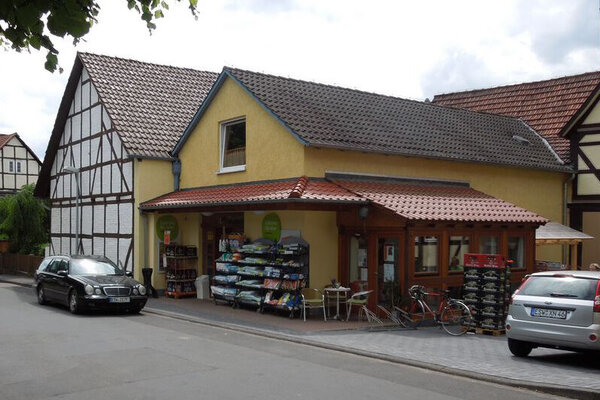Expertise
Safeguarding local supply facilities - problems and possible solutions
Patrick Küpper | 13.06.2022
The store is gone, the children have left home, and the bus doesn't even run during the school vacations - especially for older people in rural areas, local supply can become a problem. In many places, village stores have disappeared from the local landscape, and those who don't have a car find it difficult to get groceries and other necessities. What can be done?
Withdrawal from the countryside
From 1990 to 2020, the number of grocery stores decreased by 56 percent. At the same time, the sales area increased significantly. This means that many small stores, which were often found in smaller towns and villages in rural areas, have been displaced by a few large supermarkets and discounters, which are mostly spatially clustered in small and medium-sized centers. An analysis using the Thünen accessibility model shows that the nearest grocery store is far away, especially in sparsely populated areas. More than half of the population in rural areas cannot reach the nearest grocery store by foot, meaning they have to walk more than 1,000 meters. In densely populated areas, this proportion is only a good quarter of the population.
Even though most people are relatively satisfied with the local supply due to their high level of automobility, many see a clear need for action in this area. This is due not only to solidarity with less mobile local residents and the convenience of supplementary shopping, but also to the fact that local supply is not viewed purely in terms of supply aspects, but also fulfills a social function. This means that shopping facilities are important local meeting places. In addition, many seniors in particular organize their daily routines along almost daily shopping trips, and this activity gains relevance when family members and local friends are absent or diminishing and loneliness is to be avoided.
Village stores - a successful approach?
30 years ago, small grocery stores were still the dominant form of operation in the market. In the meantime, they only exist in a niche. Of the 103 village stores we surveyed in 2012, just under a quarter had closed by 2019; across Germany, the number of grocery stores with less them 400m sales area fell by 15 percent over the same period. Of the 166 village stores surveyed in 2019 and 2020, about a quarter face closure in the next five years, according to operators. On the one hand, this is due to high (car) mobility and the increased demands of customers in terms of selection and price of goods. On the other hand, small operations forms have an unfavorable cost structure because they can hardly exploit economies of scale.
Various solutions are being pursued to ensure local supply: Franchise concepts of wholesalers exploit economies of scale through standardized formats and cooperation, while community stores can be operated economically with capital and unpaid labor by citizens at locations with limited customer potential. Village stores are also supported by various funding programs because of their social function as meeting places.
Despite considerable public support, the economic situation of small stores often remains precarious. The market position of the large corporations is too dominant, and shopping in the wholesale market is too tempting for consumers. If they want to be successful, they have to sound out the local situation and find niches - such as lunch counters and meal deliveries for daycare centers or special local products that are only available in village stores. Where stationary offerings are no longer profitable, villagers will sooner or later have to rely on mobile supermarkets or organize private transportation services.
Publication
The brochure "Understanding and Shaping the Dynamics of Local Supply in Rural Areas: Impulses for Practice" presents our key scientific findings on the topic and provides numerous recommendations for rural operators, citizens' initiatives, municipalities and funding agencies. (in German).







